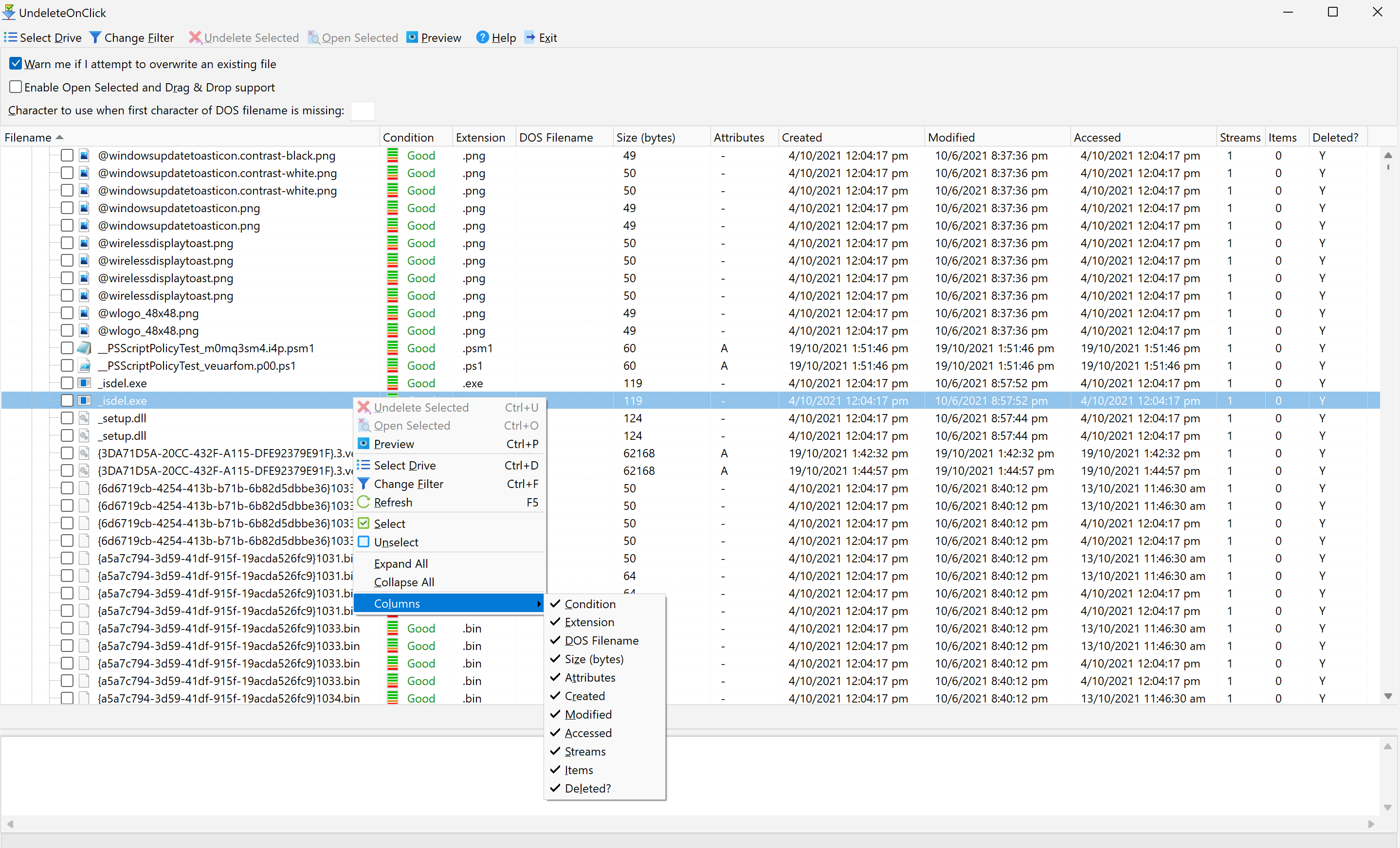
A Guide to Using UndeleteOnClick
It is not possible to guarantee that UndeleteOnClick will be successful in recovering your deleted files. If you wish to recover a deleted file now we strongly recommend that you do not read, write, change or delete any more files, or defragment your drive.
A screenshot of the main UndeleteOnClick interface is shown below:

When Windows "deletes" a file, it is not physically removed. The file is still on disk, and may be recoverable, however, Windows makes the space occupied by the file available for writing. If you create a new file, or save a changed file, it may write over the 'deleted' file's space, thus destroying it permanently. Defragmenting your drive may also overwrite the deleted files.
Be aware that because of the reasons stated above, a file may appear to be recoverable but may turn out to be corrupted or unreadable. This is not a shortfall in the performance of UndeleteOnClick but a result of the way the Windows operating system handles deleted files.
Frequently Asked Questions
FAQs about using UndeleteOnClick follow on the next page of this help file.
All Content: 2BrightSparks Pte Ltd © 2003-2024